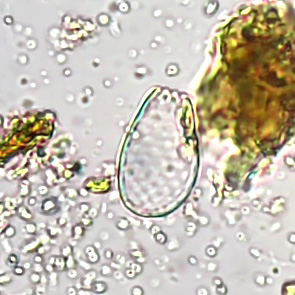Testate Amoebae: Microscopic Marvels of the Soil
- josh_weybright

- Jun 19, 2024
- 2 min read
Updated: Feb 3

Testate amoebae are tiny, yet fascinating organisms that play a significant role in soil ecosystems. These single-celled protozoa are distinctive for their protective shells, known as tests, which set them apart in the microscopic world. Let's look at what testate amoebae are, their types, and the crucial roles they play in maintaining soil health.
What Are Testate Amoebae?
Testate amoebae are a group of protozoa that encase themselves in a shell or test. These tests can be composed of various materials (xenogenic), including sand grains, bits of organic matter, or secreted substances (autogenic) like silica or calcium carbonate. The test serves as a protective barrier against environmental stresses and predators, making these amoebae resilient inhabitants of diverse environments such as soil, leaf litter, and peat bogs.
Types of Testate Amoebae
Testate amoebae are categorized based on the composition and structure of their tests.
Here are a few notable types:
Arcella
These amoebae have dome-shaped, organic tests with a circular aperture at the bottom. Their tests are often transparent, allowing a glimpse of the amoeba inside.
Difflugia
Known for their vase-shaped tests, difflugia amoebae construct their tests from various particles, including mineral grains and organic detritus, cemented together.
Euglypha
Euglypha amoebae feature oval-shaped silica plate tests with a single opening. Their tests are intricately arranged, resembling a mosaic of tiny plates.
Nebela
Nebela amoebae recycle materials from other microorganisms' shells to build their tests, resulting in a unique and often irregular appearance.
Roles in the Soil Ecosystem
Testate amoebae are vital members in the soil food web. Here’s how they contribute:
Nutrient Cycling: By feeding on bacteria, fungi, and small organic particles, testate amoebae help break down organic matter. This decomposition process releases nutrients back into the soil, enriching it and making these nutrients available to plants and other soil organisms.
Indicator Species: Testate amoebae are sensitive to changes in environmental conditions such as pH, moisture, and pollution. This sensitivity makes them excellent bioindicators for assessing soil health and monitoring the impacts of environmental changes or human activities.
Predator-Prey Dynamics: As top predators in the soil, testate amoebae control bacterial and fungal populations by feeding on them, preventing these microorganisms from becoming too abundant. In turn, they are a food source for larger soil organisms like micro-arthropods.
Why they matter
Testate amoebae may be microscopic, but their impact on the soil ecosystem is immense. From nutrient cycling to serving as bioindicators, these tiny organisms play crucial roles in maintaining soil health. They are one of the most recognizable organisms you'll find as you begin to explore the world beneath your feet.















Comments